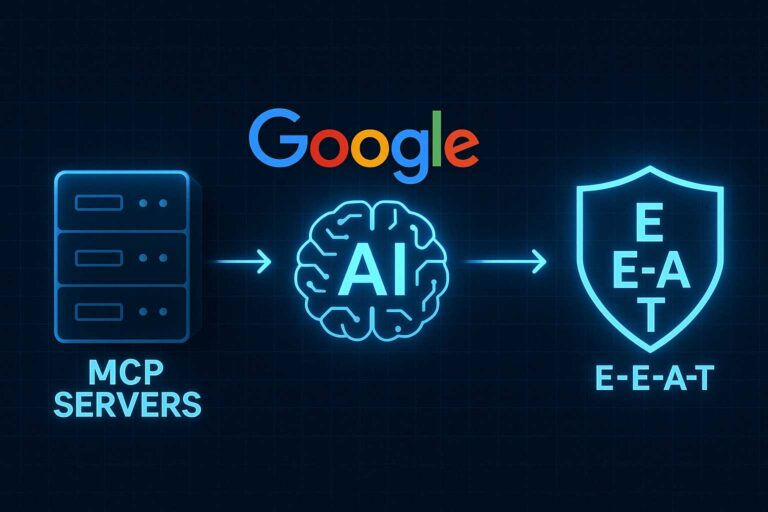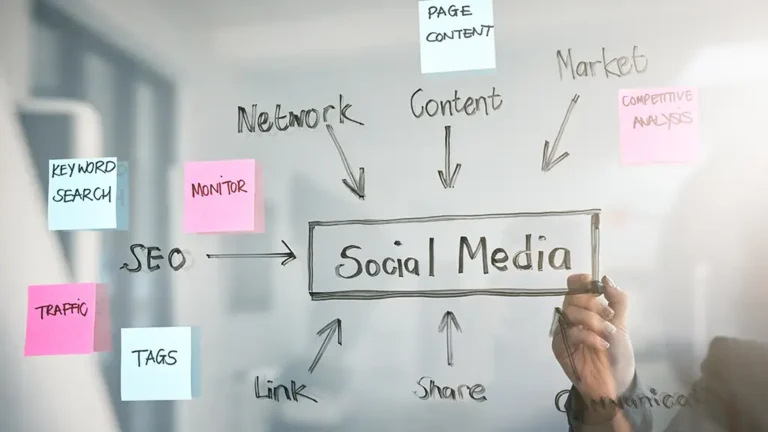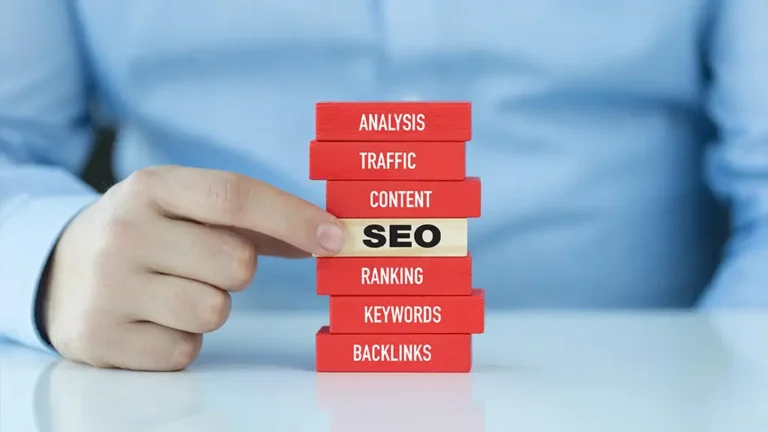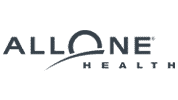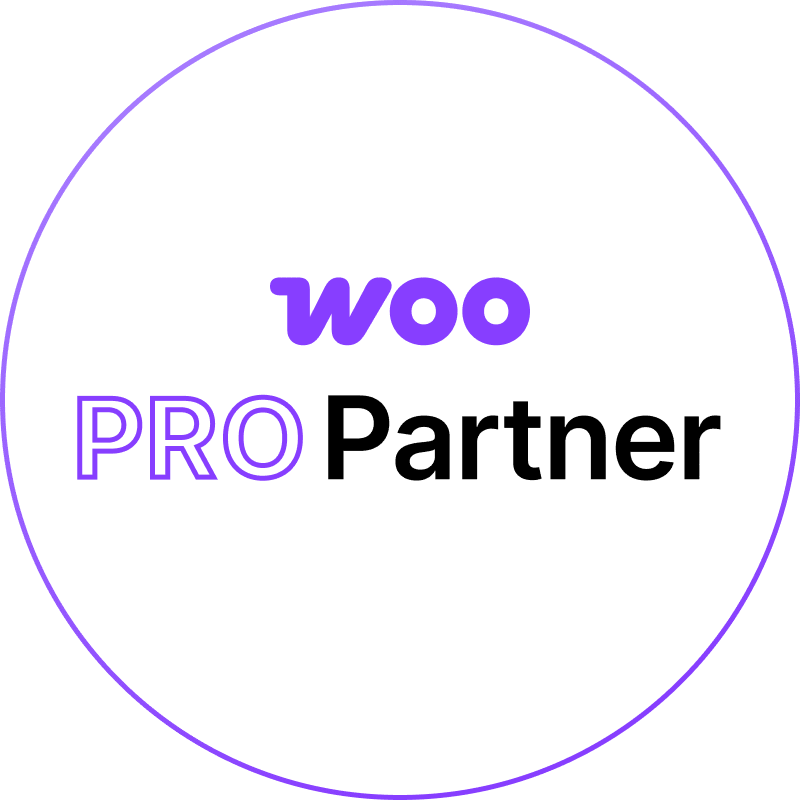The Top SEO Trends Businesses Need to Know in 2025
Search engine optimization (SEO) is constantly evolving, and 2025 is no exception. As user behaviors, search algorithms, and technology continue to advance, businesses must adapt their SEO strategies to remain competitive. What worked a few years ago may no longer deliver results in today’s dynamic digital landscape.
One of the most significant shifts in 2025 is the increasing reliance on artificial intelligence (AI) in search engines, transforming how content is discovered and ranked. Additionally, user expectations for seamless, fast, and personalized experiences are shaping how websites must perform to achieve visibility. As a result, businesses that fail to stay ahead of these trends risk falling behind their competitors.
Understanding the latest SEO trends isn’t just about keeping up—it’s about leveraging these changes to your advantage. From AI-driven search results to optimizing for user experience, staying informed can help your business attract the right audience and drive meaningful traffic. Whether you’re implementing strategies in-house or partnering with an SEO agency, aligning with these trends will position your business for success in 2025.
AI-Driven Search Optimization
Artificial intelligence has revolutionized search engines, with Google’s Search Generative Experience (SGE) being a prime example. AI-powered search results now go beyond traditional links, providing conversational answers and curated summaries that directly address user queries. For businesses, this means rethinking SEO strategies to ensure content is featured in these AI-generated responses.
To optimize for AI-driven search, businesses need to focus on content that is clear, concise, and directly answers user questions. AI prioritizes content that demonstrates expertise, authority, and trustworthiness (E-A-T), so creating high-quality, fact-based material is essential. Additionally, structuring content with headings, bullet points, and lists makes it easier for AI to parse and use your information in search summaries.
Another key aspect of AI-driven optimization is understanding user intent. AI algorithms are designed to interpret the nuances of a query, so aligning your content with the specific needs of your audience is crucial. For instance, a fitness brand targeting queries like “best post-workout recovery drinks” should provide detailed yet easy-to-digest information that addresses the searcher’s intent.
By embracing AI-driven SEO, businesses can secure prominent positions in search results, increasing visibility and establishing their authority in their respective industries.
Core Web Vitals and User Experience
User experience (UX) has always been an important component of SEO, but in 2025, its role is even more critical. Google’s Core Web Vitals—a set of metrics that evaluate site performance—continue to influence search rankings, making it essential for businesses to prioritize fast, seamless, and mobile-friendly experiences.
Core Web Vitals focus on three key areas:
- Loading performance (Largest Contentful Paint): Measures how quickly the main content of a page loads.
- Interactivity (First Input Delay): Evaluates the time it takes for a page to respond to user interactions.
- Visual stability (Cumulative Layout Shift): Assesses how stable elements on the page are during loading.
Meeting these benchmarks not only improves your rankings but also ensures a positive user experience, reducing bounce rates and encouraging longer site visits. For example, an e-commerce brand that optimizes its site for Core Web Vitals will likely see improved performance in both search rankings and conversions, as users enjoy faster and smoother browsing experiences.
Beyond Core Web Vitals, other UX factors such as intuitive navigation, accessible design, and engaging visuals contribute to better SEO performance. Sites that are easy to navigate and visually appealing encourage users to explore more pages, signaling to search engines that the content is valuable and relevant.
In 2025, prioritizing UX and Core Web Vitals isn’t optional—it’s a necessity for businesses that want to remain competitive in search rankings and deliver the experiences users expect.
Voice Search Optimization
As voice search becomes increasingly popular, businesses must adapt their SEO strategies to accommodate this growing trend. With the proliferation of voice-activated devices like Amazon Alexa, Google Assistant, and Apple’s Siri, users are turning to conversational queries for quick and convenient answers. In 2025, optimizing for voice search is no longer optional—it’s a crucial component of staying competitive in the SEO landscape.
Voice searches differ from traditional text searches in that they tend to be longer, more conversational, and often framed as questions. For instance, a user might type “best Italian restaurants NYC” but say, “What are the best Italian restaurants near me?” To capture this traffic, businesses must focus on natural language and long-tail keywords that align with how people speak.
Creating content that directly answers common questions is a powerful strategy for voice search optimization. FAQs, blog posts, and guides that include headings like “How to…” or “What is…” help your content align with the conversational queries users are asking. For example, a home improvement company could write a blog titled “How to Fix a Leaky Faucet” to target voice search users seeking quick DIY solutions.
Local businesses should also emphasize local SEO when optimizing for voice search. Many voice queries are location-based, such as “Where is the nearest coffee shop?” Ensuring your Google Business Profile is up-to-date and optimized with accurate address, hours, and services increases the chances of being featured in voice search results.
By embracing conversational language, targeting long-tail keywords, and focusing on local SEO, businesses can capture the growing segment of voice search users and enhance their visibility in 2025.
The Rise of Visual and Video SEO
In 2025, visual and video content continues to dominate digital marketing, and search engines are increasingly prioritizing these formats. As platforms like Google Lens and YouTube integrate advanced AI capabilities, optimizing images and videos for search is more important than ever. Businesses that invest in visual SEO can enhance their visibility, engage users, and drive more traffic.
Optimizing images begins with high-quality visuals that are relevant to your content. Proper use of alt text, which describes the image for search engines, is essential for improving discoverability. For example, an online retailer could use alt text like “red leather handbag with gold accents” to target specific search queries. Including descriptive file names and captions further enhances image optimization.
Video SEO is equally critical, as platforms like YouTube remain the second-largest search engine globally. Creating videos that are educational, entertaining, or actionable increases the likelihood of appearing in search results. Optimizing video titles, descriptions, and tags with relevant keywords helps search engines understand your content and rank it appropriately. For instance, a fitness trainer could create a video titled “10-Minute Home Workout for Beginners” to target users searching for quick exercise solutions.
Interactive content, such as tutorials or product demonstrations, performs particularly well in video SEO. Embedding videos on your website also improves user engagement and dwell time, signaling to search engines that your content is valuable.
Finally, leveraging schema markup for images and videos ensures they are indexed properly and eligible for rich results. By focusing on visual and video SEO, businesses can capitalize on the growing demand for multimedia content and stay ahead in search rankings.
The Expansion of Local SEO
Local SEO has always been vital for businesses that rely on geographic audiences, and its importance continues to grow in 2025. As more users turn to “near me” searches and location-based queries, optimizing for local search is essential for driving foot traffic and local leads.
The foundation of strong local SEO is an optimized Google Business Profile. This free tool allows businesses to manage how their information appears on Google Search and Maps. Ensuring your profile is complete and accurate, including business hours, address, phone number, and categories, improves your chances of appearing in local search results. For example, a bakery in Chicago might list its offerings, such as custom cakes or gluten-free options, to attract specific queries.
Local keyword optimization is another critical component. Incorporating location-specific keywords into your website’s meta titles, descriptions, and content helps search engines associate your business with local queries. For instance, a law firm targeting “divorce attorney Los Angeles” can create blog content addressing local laws and client concerns to boost its visibility.
Reviews also play a significant role in local SEO. Positive reviews signal trustworthiness to both users and search engines, influencing rankings and click-through rates. Encouraging satisfied customers to leave reviews on Google, Yelp, or industry-specific platforms helps build credibility and attract new business.
Finally, localized content can set your business apart. Creating blog posts, videos, or social media updates tailored to local events, news, or interests strengthens your connection with the community. For example, a fitness studio could write about upcoming charity runs or share tips for staying active during the winter months.
By focusing on local SEO, businesses can capture geographically targeted traffic, enhance their online presence, and connect with customers in meaningful ways.
Zero-Click Searches and Featured Snippets
Zero-click searches have become a defining feature of the modern search landscape, and their impact will continue to grow in 2025. These occur when users find answers directly on the search engine results page (SERP) without needing to click through to a website. Google achieves this by displaying featured snippets, knowledge panels, and other rich content that satisfies the query immediately. While this trend reduces traffic to websites, it offers brands an opportunity to gain visibility and establish authority.
To capitalize on zero-click searches, businesses must focus on optimizing their content for featured snippets. These snippets are typically drawn from content that is well-structured and directly answers user queries. For example, if a query is “How to create a marketing plan,” a blog post featuring a clear, bulleted list of steps has a higher chance of being selected for the snippet.
Understanding the types of featured snippets—paragraphs, lists, tables, and videos—is key to aligning your content. A fitness brand might create a short instructional video for “best core exercises” to appear in a video snippet, while a SaaS company could provide a comparison table for “top project management tools.”
Earning a featured snippet position requires focusing on user intent and creating concise, authoritative content. Pair this with schema markup to provide Google with the structured data needed to display your content effectively. While zero-click searches may not always result in clicks, they can significantly enhance brand visibility and credibility in your industry.
E-A-T and Content Quality
Expertise, authority, and trustworthiness (E-A-T) are critical ranking factors for Google, especially in 2025. As the search engine continues to prioritize high-quality, reliable content, businesses must ensure their online presence reflects these principles.
Expertise means demonstrating a deep understanding of your field. This involves publishing accurate, well-researched content created by knowledgeable professionals. For instance, a financial services company can showcase its expertise by creating detailed guides on tax planning or retirement strategies, authored by certified advisors.
Authority is built through backlinks, mentions, and overall industry recognition. When reputable websites link to your content, it signals to Google that your site is a trusted source. Businesses can enhance authority by engaging in outreach campaigns, guest posting, and collaborating with industry influencers.
Trustworthiness involves transparency and user safety. Secure websites (using HTTPS), clear privacy policies, and accurate contact information contribute to trust. Reviews and testimonials also reinforce credibility, as they showcase real customer experiences. A healthcare provider, for example, can feature patient testimonials and verified results to build trust.
By focusing on E-A-T, businesses can improve both their rankings and audience perception. Regularly auditing your content to ensure it aligns with these principles is essential for maintaining a competitive edge in SEO.
Multimodal Search and Emerging Technologies
The future of SEO is increasingly multimodal, combining text, images, and video in search queries. With advancements like Google Lens and AI-powered visual recognition, users can now search using photos, screenshots, or even real-time images, expanding the way they interact with search engines.
For businesses, this means optimizing not only textual content but also multimedia assets. High-quality images with descriptive alt text and file names are critical for appearing in visual search results. A furniture retailer, for instance, could optimize product images with keywords like “modern leather sofa” to ensure visibility in visual queries.
Video content continues to dominate as well. Platforms like YouTube, now integrated more seamlessly with Google’s search, require businesses to optimize video titles, descriptions, and captions. Tutorials, product demonstrations, and explainer videos are particularly effective for capturing search traffic.
Emerging technologies like AR (augmented reality) and VR (virtual reality) are also beginning to influence search behavior. Businesses that invest in AR-enabled content, such as virtual try-ons for fashion brands or 3D home tours for real estate, position themselves at the forefront of this trend.
To succeed in this multimodal environment, businesses must think beyond traditional text optimization and embrace the full range of search capabilities available in 2025.
The Future of SEO: Preparing for What’s Next
The evolution of SEO shows no signs of slowing down. To stay competitive, businesses must look ahead and prepare for emerging trends and innovations that will shape the future of search.
One of the most significant shifts will be the growing role of personalization. AI-driven search engines are becoming better at tailoring results to individual users based on their preferences, behavior, and location. Businesses can prepare by creating segmented content that caters to different audience personas and leveraging tools like dynamic content personalization on their websites.
Another trend is the increasing integration of SEO with other digital marketing disciplines. As social media, paid ads, and email marketing become more interconnected with search, businesses will need to adopt a holistic approach. For example, a brand running a social media campaign can use SEO insights to align its hashtags and post captions with trending search queries, amplifying the impact of both efforts.
Voice search and conversational AI are also expected to play a bigger role. As smart devices become more integrated into daily life, businesses must optimize for natural language queries and focus on creating content that answers specific, spoken questions.
Finally, sustainability and corporate responsibility will influence SEO. Consumers are increasingly searching for eco-friendly products and socially responsible brands. Businesses that align their content and practices with these values can gain a competitive advantage in search rankings.
By staying adaptable and forward-thinking, businesses can ensure their SEO strategies remain effective in a rapidly evolving digital landscape.




